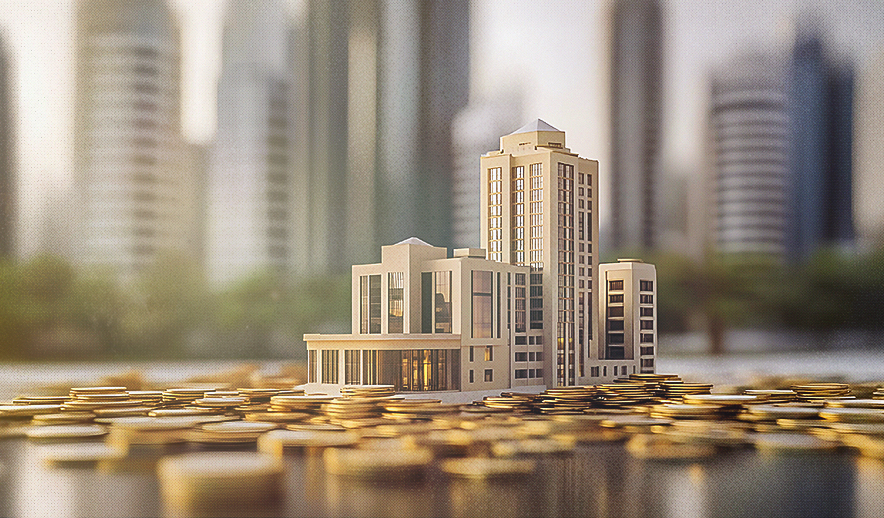
UAE Home Loan Refinancing

One of the more attractive financial strategies for house owners in the UAE to optimize loan conditions is mortgage refinancing, also known as a mortgage buyout loan. It gives borrowers an opportunity to reduce monthly payments, interest rates, or change the loan tenure, eventually saving large sums of money. This piece will explain how refinancing works, the benefits and possible concerns, and provide practical examples of savings. It also provides some important tips for those considering refinancing.
Several banks in the UAE offer competitive refinancing options, including Dubai Islamic Bank Home Loan, ADCB Home Loan, FAB Home Loan, First Abu Dhabi Bank Home Finance, Mashreq Home Loan, DIB Home Finance, RAKBANK Home Loan, and Standard Chartered Bank Home Loan. Each lender offers unique benefits, making it essential to compare options to find the best mortgage loan refinancing solution tailored to your needs.
The essence of refinancing a mortgage is replacement with a new loan, often under different terms. A new loan pays for the old one, then the borrower begins to pay back under the new terms. Whether you’re looking for the best home loan refinancing options or aiming to lower your monthly payments, careful planning and a thorough understanding of the process can lead to significant savings.
Benefits of Mortgage Refinancing
1. Lower Interest Rates:
Some of the primary reasons for refinancing are for a lower interest rate. A lower rate can significantly reduce the total interest paid over the life of a loan, resulting in thousands of Dirhams in savings. The most opportune time to refinance is when interest rates are on a downward trend ( which is clearly not happening currently with EIBOR being the highest since 2008). This allows you to lock in a lower rate than your existing mortgage, reducing your monthly payments and overall interest cost. Monitoring the UAE’s central bank rates and the EIBOR (Emirates Interbank Offered Rate) can provide insights into interest rate trends Compare current mortgage rates offered by different lenders to your existing rate. If current rates are significantly lower, it might be a good time to refinance.
2. Reduced Monthly Payments:
Refinancing into a loan at an even lower interest rate and/or longer tenure can bring down the monthly payments, freeing up cash flow for other expenses or investments.
3. Shortened Loan Tenure:
Some borrowers refinance a loan with a shorter term; for example, going from a 30-year to a 15-year mortgage. It may increase the monthly payments but reduces the total interest paid, enabling one to build up equity in a house more rapidly.
4. Access to Home Equity:
This will also allow homeowners to tap equity in the home through cash-out refinance that can then be used for other purposes such as renovation, education, etc.
Potential Issues of Mortgage Refinancing
1. Costs of Refinancing:
All types of fees are involved in refinancing, including the application fee, appraisal fee, and closing costs. Sometimes, these fees don’t turn out to be that great of a deal, mostly when the borrower plans to sell the property soon.
2. Longer Loan Term:
Refinancing to extend the loan term will decrease monthly payments yet may increase the amount of interest paid in the lifetime of the loan.
3. Impact on Credit:
The act of refinancing will result in a credit check. This will automatically affect the borrower’s credit score, even if only for a short period. If the borrower is in a worse financial position compared to the time they took the original loan, they could end up being charged higher rates.
4. Prepayment Penalties: Probably
Some of the current mortgages may have prepayment penalties adding to the cost of refinancing; these must be factored in while deciding.
Practical Examples of Savings
- Lower Interest Rate Example:
Suppose a homeowner has an outstanding mortgage balance of AED 800,000 with an interest rate of 5.0% for 20 years. If they refinance it at 3.75%, the monthly payment drops from approximately AED 5,280 to AED 4,744, thereby saving about AED 536 a month. Over the course of the loan, this adds up to about AED 128,640 in savings. - Shortened Loan Tenure Example:
Imagine a borrower with a 25-year mortgage of AED 1,200,000 at an interest rate of 4.8%. Refinancing to a 10-year loan at a 3.6% interest rate changes the monthly payment from AED 6,848 to AED 11,954. While the monthly payment increases, the borrower saves AED 431,520 in interest payments over the life of the loan.
These examples illustrate the potential savings homeowners can achieve through refinancing, whether by securing a lower interest rate or by shortening the loan term. However, it’s essential to consider the refinancing costs and ensure the long-term benefits outweigh the initial expenses.
Fees That Will Be Charged in Refinancing a Mortgage
Different varieties of fees may be incurred in refinancing one’s mortgage in the UAE. These include:
1. Existing Bank Settlement Fee: This is capped at AED 10,000 or 1% of the value of the mortgage—whichever is lower. While the cost for early settlement is regulated by the Central Bank of the UAE, some banks do make exceptions.
2. Property Valuation Fee: This fee may be as low as AED 2,500 but can reach as high as AED 3,150.
3. Mortgage Registration Fee: It is 0.25% of the value of a mortgage.
4. Mortgage De-Registration Fee: The fee could stand at AED 1,590.
5. Mortgage Re-Registration Fee: This fee represents 0.25% of the value of the mortgage, plus AED 290.
6. Mortgage Registration Trustee Fee: This can be AED 2,000 plus AED 100 for 5% VAT on properties less than AED 500,000, while it can amount to AED 4,000 and AED 200 for 5% VAT on property prices over AED 500,000.
Useful Tips When Refinancing
1. Assess your financial goals:
Be clear about your financial goals for refinancing. You will be guided on what to do, whether it is reducing your monthly payments or cutting down the loan term or tapping into home equity.
2. Annual Review:
It’s always considered best practice to review your mortgage loan at least once a year to be sure that your interest rate is very competitive, and there aren’t significantly better offers available from other lenders.
3. Shop Rates:
Compare offers from different lenders for the best possible rate and terms. Comparison tools are available online, and advice can be sought from mortgage brokers to gain an all-rounded view.
4. Know the Overall Cost:
Calculate all costs to refinance—every fee, prepayment penalties—and make sure that savings are more than the total amount of costs.
5. Check Your Credit Score:
A better credit rating will get you better refinancing. Ensure that your credit report has no errors; improve your score if it is not as good as you desire.
6. Fine Print:
Read through all the documents relating to the loan and understand the terms and conditions. Get any misty clauses explained those concerning interest rates and fees.
7. Timing:
It only makes sense to refinance if you’re going to be in the property for a long time. Calculate how long it will take to reach a break-even point—the length of time that it takes for the savings to offset the costs of refinancing.
Conclusion
It can help you with the reduction of interest rates and monthly payments and achieve many other financial goals when refinancing your mortgage in the UAE. It is a process that calls for consideration in terms of costs against benefits, terms, and the financial situation of the borrower. Knowing the benefits and pitfalls and using the tips provided will go a long way to assist homeowners in making informed decisions that improve financial wellbeing.



